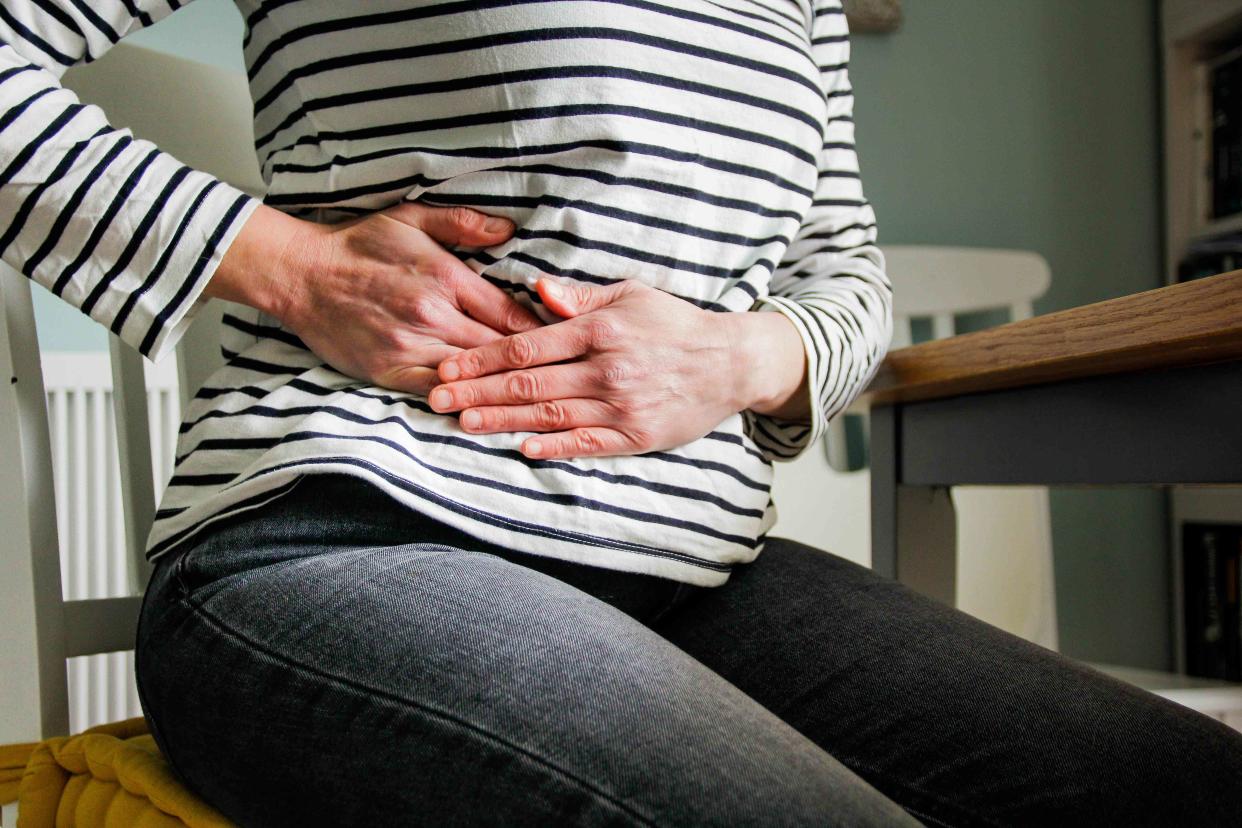What You Should Know About Your Appendix

Kinga Krzeminska / Getty Images
Medically reviewed by Robert Burakoff, MD
The appendix is a small, pouch-like organ located on the lower right-hand side of the abdomen. The appendix's role has been largely unclear, but some experts now believe the organ may help restore your gut back to normal after diarrhea or antibiotic treatment.
Sudden, severe pain near the appendix can be a sign of a condition called appendicitis. With appendicitis, the appendix becomes blocked and inflamed. The appendix then may burst, leading to a serious infection. To prevent that complication, appendix pain requires urgent assessment by a healthcare provider.
What Does Your Appendix Do?
Healthcare providers and scientists still debate the function of the appendix. Some believe it is a vestigial organ, meaning it served an important role for our evolutionary ancestors but has since lost its function.
In other mammals, the appendix releases signals to regulate the immune cells that respond to infections. Some researchers believe the appendix may play a similar role in humans.
Recent studies uncovered another potential role for the appendix: it stores beneficial gut bacteria. As such, the appendix can help restore a healthy gut bacteria after you've had diarrhea or completed a course of antibiotics.
What Side Is Your Appendix On?
The appendix is a small, 3.5-inch long pouch on the lower right-hand side of the abdomen. The finger-like pouch sticks out at the top of the large intestine, where the small intestine ends.
If there are problems with the appendix, you may feel pain that moves from the belly button to the lower-right part of the abdomen.
What Are the Signs Something Is Wrong With Your Appendix?
The most common problem to have with your appendix is appendicitis. Appendicitis is a condition that can develop when the appendix becomes blocked—such as by stool—and inflamed. If untreated, the appendix could burst. The main symptom of appendicitis is pain.
Appendicitis pain can feel minor at first but eventually becomes sharper and more severe. Tell-tale signs that the pain is from appendicitis include:
The pain moves from the belly button to the lower right-hand side of the abdomen.
The pain has a sudden onset, waking you if you are asleep.
The pain intensifies when moving around, taking deep breaths, coughing, or sneezing.
The severity feels different from other types of pain.
The pain will increase if you press on the area.
The pain precedes other symptoms, which can include:
Loss of appetite
Nausea and vomiting
Fever
Abdominal swelling
Bowel problems
Besides pain from appendicitis, there could be other signs that something is wrong with your appendix. Much less commonly, you can experience symptoms of appendiceal cancer.
Cancer of the appendix is rare. There are often no symptoms at first, but when the tumor gets larger, you can experience:
Pain
Bloating
Nausea and vomiting
A feeling of fullness after only eating a little bit
A carcinoid tumor—a 1-inch long tumor that usually grows on the end of the organ—is the type of tumor most likely to develop. The cancer cells can release various hormones and chemical messengers that may cause a condition called carcinoid syndrome. The common symptoms of this syndrome include:
Flushing
Diarrhea
Problems on the right side of the heart
Conditions Mistaken for Appendicitis Pain
Some diseases and infections have painful symptoms that can be mistaken for appendicitis. Besides cancer of the appendix, which again is rare, conditions include:
Ovarian cyst: The fluid-filled sac that forms on ovaries can cause intermittent sharp pain in your lower abdomen. When the cyst ruptures, the pain can be sudden and severe.
Crohn's disease: The inflammatory bowl disease can cause abdominal pain.
Pelvic inflammatory disease: One of the symptoms of this sexually transmitted bacterial infection that affects the cervix in pain in the lower abdomen.
Kidney stones: Hard mineral or salt deposits in the kidney can cause intense pain.
Infection: Certain infections, such as a kidney infection, can cause abdominal pain. Yersiniosis is another infection that can be confused for appendicitis because of the lower right abdominal pain it can cause. The bacterial infection can come from eating contaminated undercooked or raw pork.
When To Seek Medical Care
If you are experiencing pain or discomfort in the lower-right section of your abdomen, seek medical help. You should also visit a healthcare provider if you are experiencing any other symptoms that may signal appendicitis. Appendicitis is a medical emergency. If appendicitis goes untreated, the appendix may burst and cause a life-threatening infection.
Once under medical care, healthcare providers will ask about your symptoms and medical history and perform a physical exam. They may also run a variety of tests to determine if there is anything wrong with your appendix and, if so, what. This may could include blood, urine, or pregnancy tests. They may also do imaging scans of your abdomen.
Your treatment will depend on what is causing your symptoms. If there is a problem with your appendix, treatment will vary based on the condition. For instance, appendicitis treatment may include antibiotics and surgery to remove the appendix (appendectomy).
A Quick Review
The appendix is a small organ located on the lower right-hand side of the abdomen. The appendix is finger-shaped and juts out from the top of the large intestine, right where the large intestine connects to the small intestine. The appendix's exact function has been long uncertain. Some experts think any need of the appendix has gone away with evolution while newer research suggests the organ might help in restoring healthy gut bacteria. If there are problems with the appendix, you may feel pain. With appendicitis, for instance, the pain moves from the belly button to the lower-right part of the abdomen. If you are experiencing any signs or symptoms that indicate something may be wrong with your appendix, you should seek medical help to prevent serious complications.
For more Health news, make sure to sign up for our newsletter!
Read the original article on Health.
